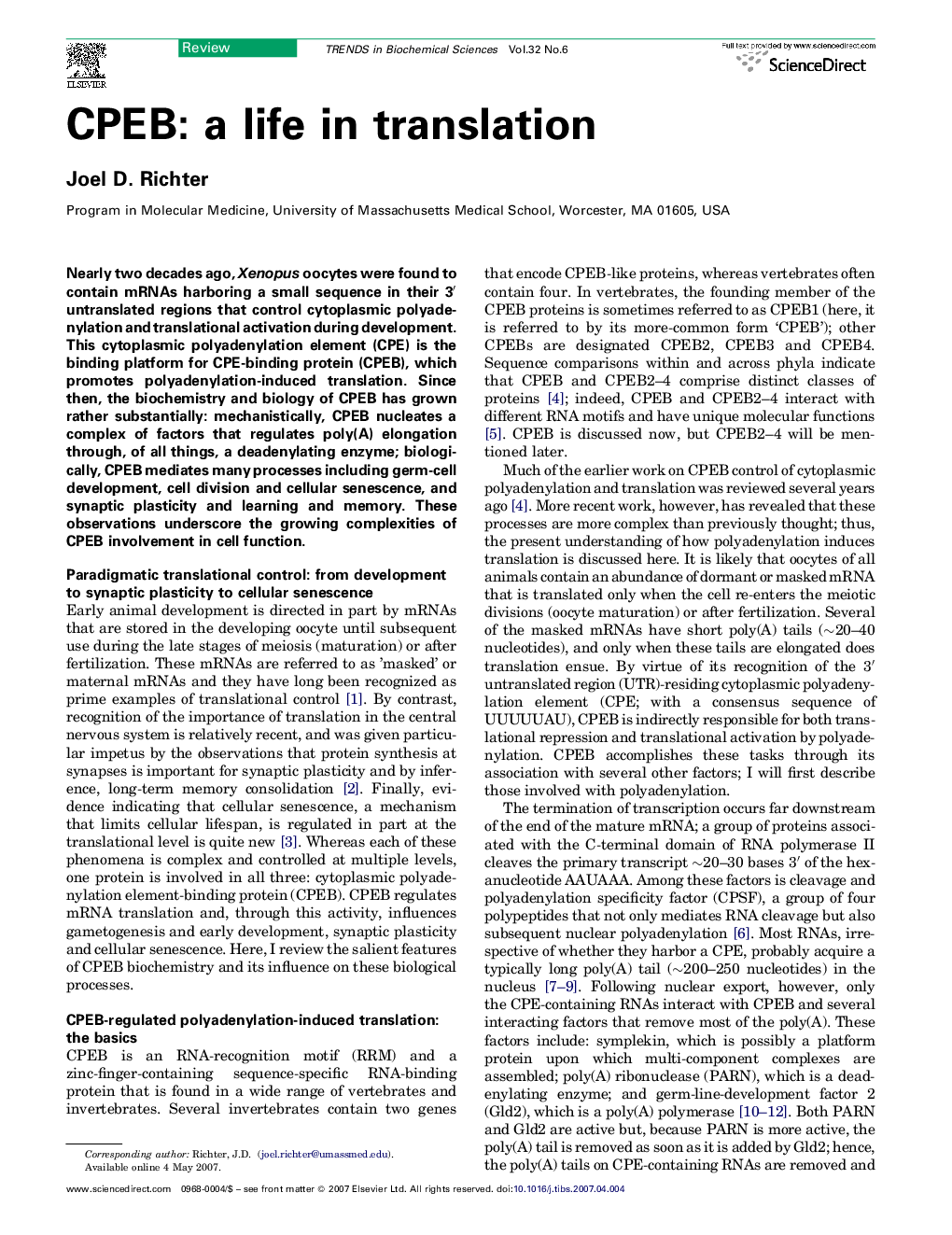| Article ID | Journal | Published Year | Pages | File Type |
|---|---|---|---|---|
| 2031434 | Trends in Biochemical Sciences | 2007 | 7 Pages |
Nearly two decades ago, Xenopus oocytes were found to contain mRNAs harboring a small sequence in their 3′ untranslated regions that control cytoplasmic polyadenylation and translational activation during development. This cytoplasmic polyadenylation element (CPE) is the binding platform for CPE-binding protein (CPEB), which promotes polyadenylation-induced translation. Since then, the biochemistry and biology of CPEB has grown rather substantially: mechanistically, CPEB nucleates a complex of factors that regulates poly(A) elongation through, of all things, a deadenylating enzyme; biologically, CPEB mediates many processes including germ-cell development, cell division and cellular senescence, and synaptic plasticity and learning and memory. These observations underscore the growing complexities of CPEB involvement in cell function.
